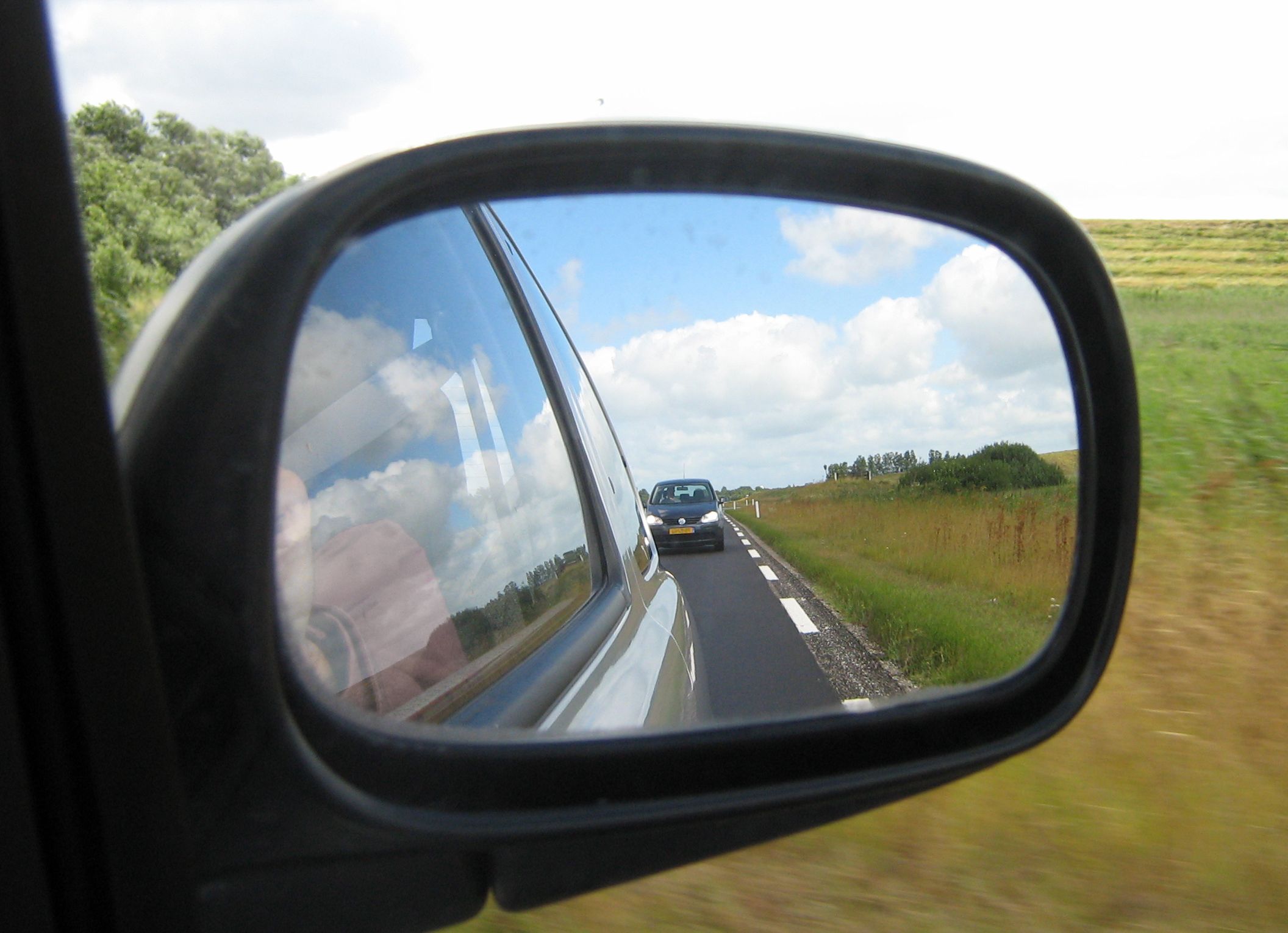Monday, February 08, 2010
Fix Your Mirrors
"Objects in mirror may be closer than they appear" is a helpful warning, but what about the objects that aren't "in mirror"?
Almost all cars have blind spots of some kind, including yours. The trick is to use your mirrors to minimize them as much as possible, and chances are good that you're not doing a very good job. Here's a quick quiz:
Question 1: Is the side or rear of your car visible to you in your door-mounted rear-view mirrors, from your normal driving position?
A. Yes
B. No
A large number of people, likely including you, will answer (A). If that's the case, you probably have a larger-than-necessary blind spot.
For years my door mirrors were angled so I could see along the sides of my car. My thinking was if I could see all the way down the side of the car, there couldn't possibly be anything next to the car that I didn't see. The problem is this tactic leaves a blind spot just behind the front doors. Cars next to mine would be visible while they were approaching from behind, but would drop out of sight as they passed the range of the mirrors but before they entered my peripheral vision.
The flaw in the logic is the location of the blind spot itself, and is revealed when we use the proper names for the mirrors:
The rectangular thing in the middle of your windshield is your rear-view mirror. It is meant for you to see things in the rear, as in behind, your car. That includes directly behind, as well as off-to-the-side-and-behind. Cars can get pretty far up next to you before they drop out of range of this mirror.
The things mounted on your doors are your side-view mirrors. They are meant for you to see things to the sides of your car, not to the rear. Your rear-view mirror is taking care of that already. Your side-view mirrors should be aimed so that you can just start to see the front of a car as you are just about to lose sight of the back of that car in your rear-view mirror. Read that again:
Your side-view mirrors should be aimed so that you can just start to see the front of a car as you are just about to lose sight of the back of that car in your rear-view mirror.
If you're in a go-fast mood, your side-view mirrors should be aimed so that you lose sight of the front of a car just after you pick up the back of that car in your rear-view mirror.
If you can clearly see most of any one car in more than one mirror at the same time, you probably have them aimed incorrectly. Car and Driver has a somewhat helpful illustrated guide to get you going. PLEASE check it out, then go fix your mirrors.
Subscribe to:
Post Comments (Atom)

No comments:
Post a Comment